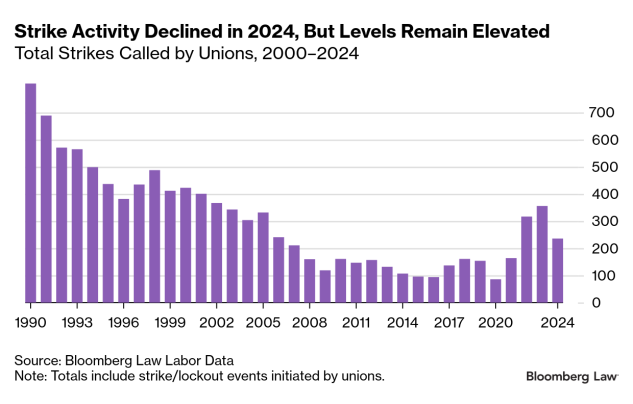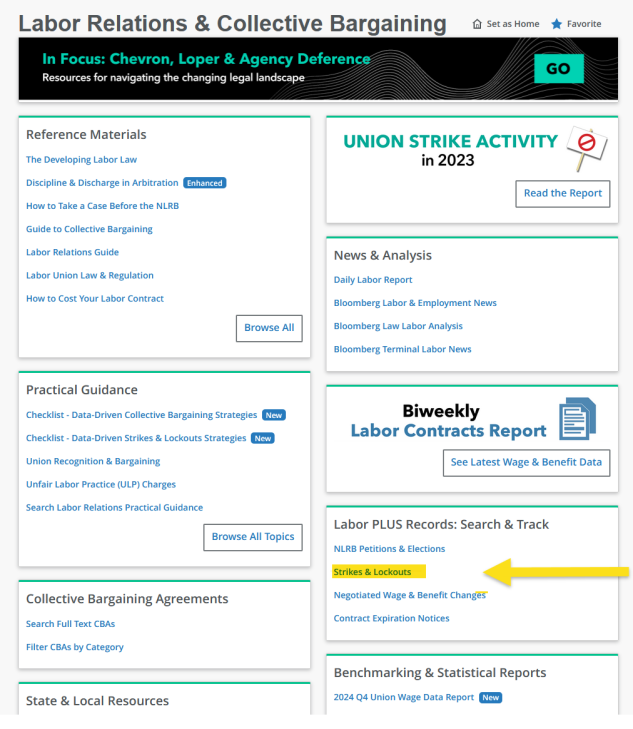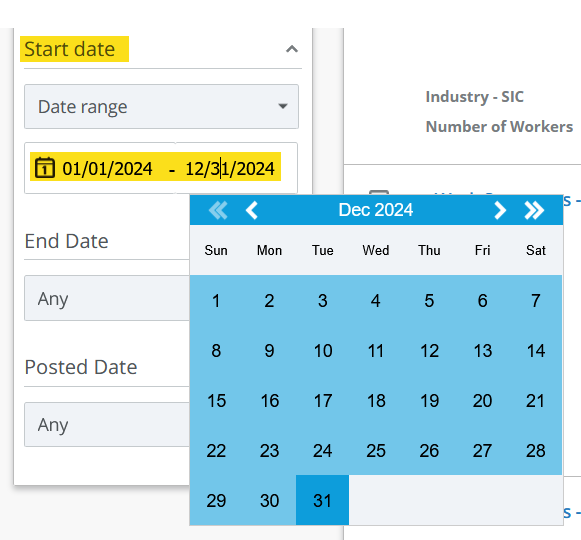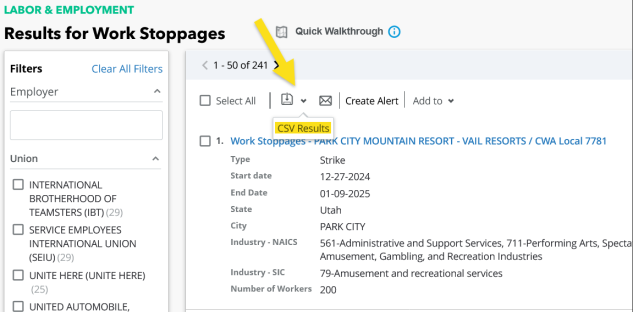This Bloomberg Law Data article contains step-by-step instructions that show Bloomberg Law subscribers how to conduct this research on their own. See GENERATE THE DATA below.
Unions led fewer strikes against US employers last year than in 2022 or 2023, according to Bloomberg Law labor data. But the 236 walkouts called in 2024 still represent the third-highest annual total in almost two decades, suggesting that the post-pandemic trend of labor unrest is still far from over.
After unions initiated only 86 strikes in shutdown-riven 2020, strikes took place with increasing frequency in the ensuing three years—from 164 in 2021 to 317 in 2022 to 356 in 2023—as workers sought to assert more control over their job security and compensation. It took until 2024 for the tide of strikes to subside (to 236) rather than rise.
Despite last year’s downturn, strike activity remains unusually high. Although 2022–2024 can barely compare to the turbulence of the 20th century, when unions typically called more than 400 strikes per year, this is the first time since 2005–2007 that the US labor market has seen three consecutive years of 200-plus strikes.
It’s worth noting that 2024’s high strike total was reached with almost no help from Starbucks workers. Bloomberg Law data show that the coffee retail chain, which has been fighting unionization efforts at hundreds of its locations, was hit with 109 strikes in 2022 and another 60 in 2023. But in February 2024, Starbucks and its SEIU-affiliated union called a truce amid a renewed commitment to negotiating a first contract. The result: Only one of 2024’s 236 strike events was against Starbucks.
However, with none of Starbucks’ unionized workers yet under contract, that agreement is now in jeopardy—which means that 2025 might see an increase in strike activity yet again.
GENERATE THE DATA
To replicate the research that was used for this article:
1. Visit Bloomberg Law’s Labor Relations & Collective Bargaining page. (Bloomberg Terminal subscribers: Run BLAW OUT and search for “Labor Relations & Collective Bargaining”.)
2. Under Labor PLUS Records: Search & Track, select the “Strikes and Lockouts” tracker (highlighted below).
The “Strikes and Lockouts” tracker contains details of more than 11,000 work stoppages from 1989 to present, updated on a daily basis. The scope of the results can be controlled by using the filters on the left side.
3. Find the “Start Date” filter on the left side, select the “Date Range” option in the drop-down menu, and enter “01/01/2024 – 12/31/2024" in the calendar display.
4. Download the records into a spreadsheet by clicking the download icon above the list of results, and selecting “CSV results.”
5. The resulting spreadsheet file can now be used to:
- filter the records based on their stoppage types (Strike, Lockout, Strike/Lockout, or Sickout); and
- search the records for “Starbucks” and other employer names.
Because Bloomberg Law’s research tools are regularly updated, users’ results when following these instructions may differ from the results generated for this article.
If you’re reading this article on the Bloomberg Terminal, please run BLAW OUT to access the hyperlinked content or click here to view the web version of this article.
To contact the reporter on this story:
To contact the editor responsible for this story:
Learn more about Bloomberg Law or Log In to keep reading:
See Breaking News in Context
Bloomberg Law provides trusted coverage of current events enhanced with legal analysis.
Already a subscriber?
Log in to keep reading or access research tools and resources.




